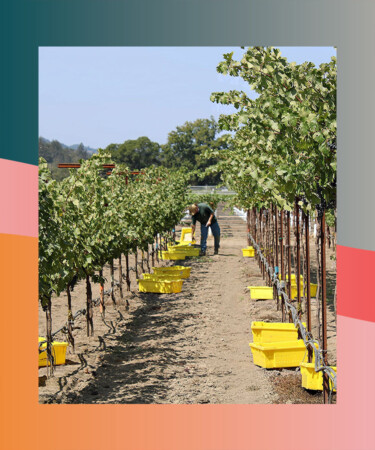As climate change causes temperature increases in wine country, vintners look for ways to protect fragile grapes from increasingly hot environments. The solution, according to University of California, Davis researchers, may lie within the grapevine trellis system.
Results from a new study suggest that single high-wire trellis systems can protect grapes from overexposure to sunlight, according to a Sept. 29 press release. The research was published in the Frontiers in Plant Science academic journal.
While grapes can usually withstand steamy weather, exceptionally hot summers can result in sugary, high-ABV wines with minimal acid. The commonly-used vertical shoot position (VSP) trellises, in comparison to high-wire systems, can leave fruit unprotected from harsh light and heat.
“We’re finding that there is no shortage of solar radiation in California. During these heat waves, these VSP trellises provide zero protection,” lead author Kaan Kurtural states in the release. “Because the fruit is low to the ground, you also get heat reflecting back into the canopy and clusters.”
The alternative system could provide much-needed shade to Cabernet Sauvignon grapes in hot regions like California. Throughout the duration of the six year study, researchers considered six different trellis methods. High-wire trellises, which stand higher than VSPs at about five and a half feet, allow vine leaves to shade the fruit. It could also result in a higher yield and more efficient use of water supplies, among other benefits.
“The effect is similar to a good shade cloth, but more economical,” says Kurtural. “The high-wire systems also make it easy to harvest grapes with machines, which can save on labor costs.”
Transitioning to a single high-wire trellis system doesn’t require replanting and can be completed in some 18 months, depending on vineyard size. Out of all the things we’ve learned “through the grapevine,” this nugget is especially useful.
